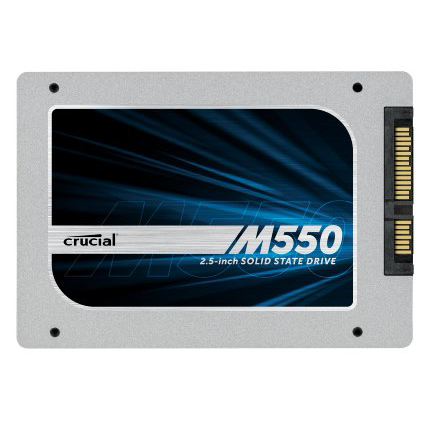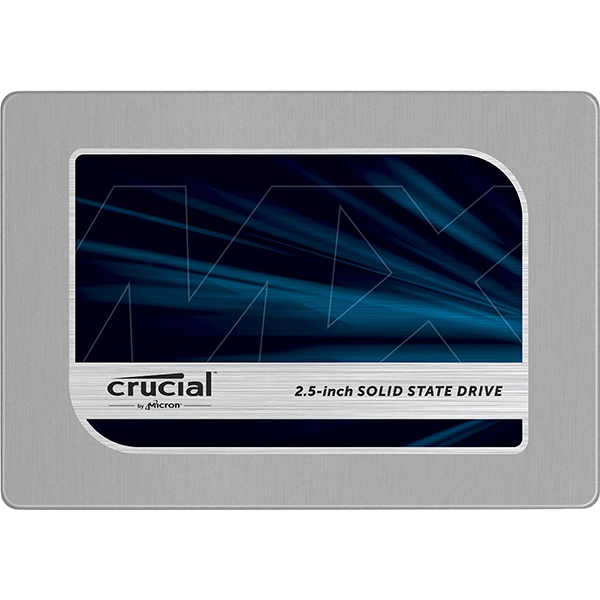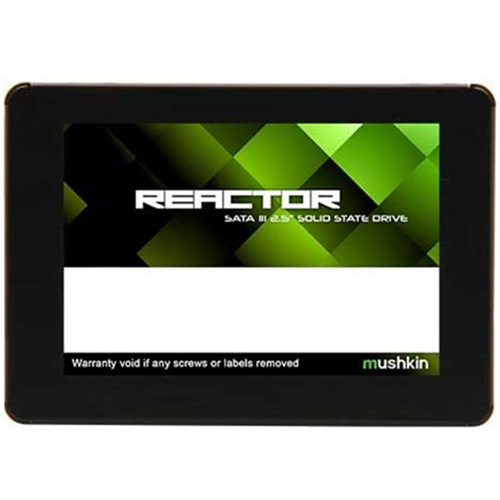Crucial BX100 1TB SSD Review
Why you can trust Tom's Hardware
Four-Corner Performance Testing
To read about our storage tests in-depth, please check out How We Test HDDs And SSDs. Four-corner testing is covered on page six.
128KB Sequential Read Performance

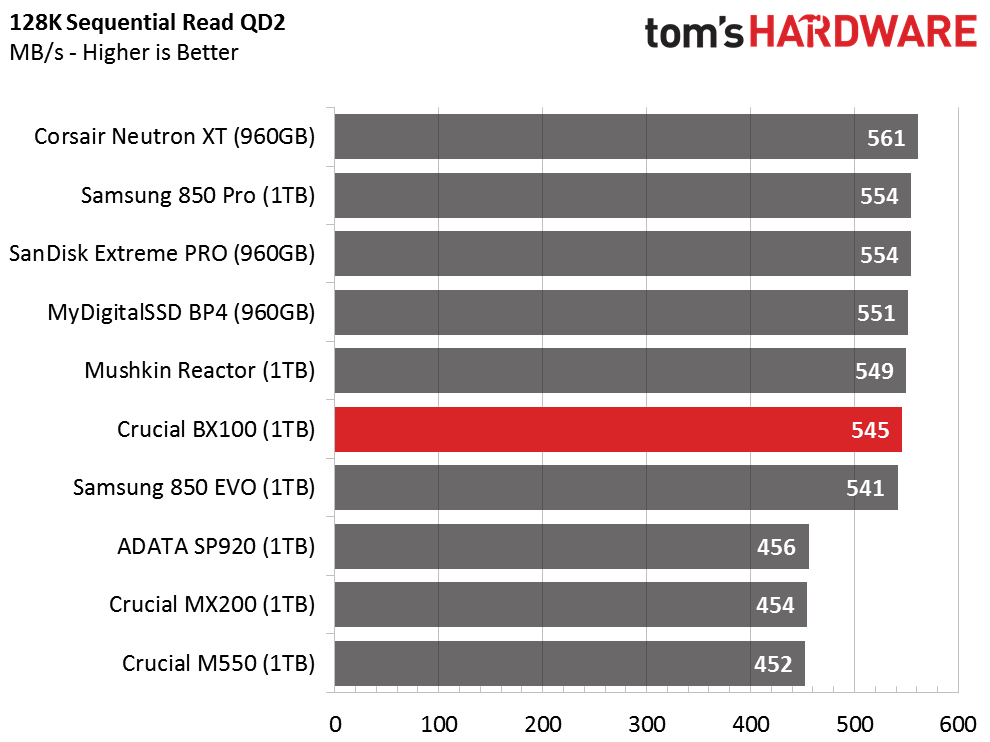
Sequential read performance starts out strong at low queue depths and continues on through the higher queue depths. This is typical of products based on the SM2246EN controller.
We see two distinct groups in the sequential read test at a queue depth of two. It would be nearly impossible for you to tell the difference between drives in the first group reading large files back from the drive.
128KB Sequential Write Performance
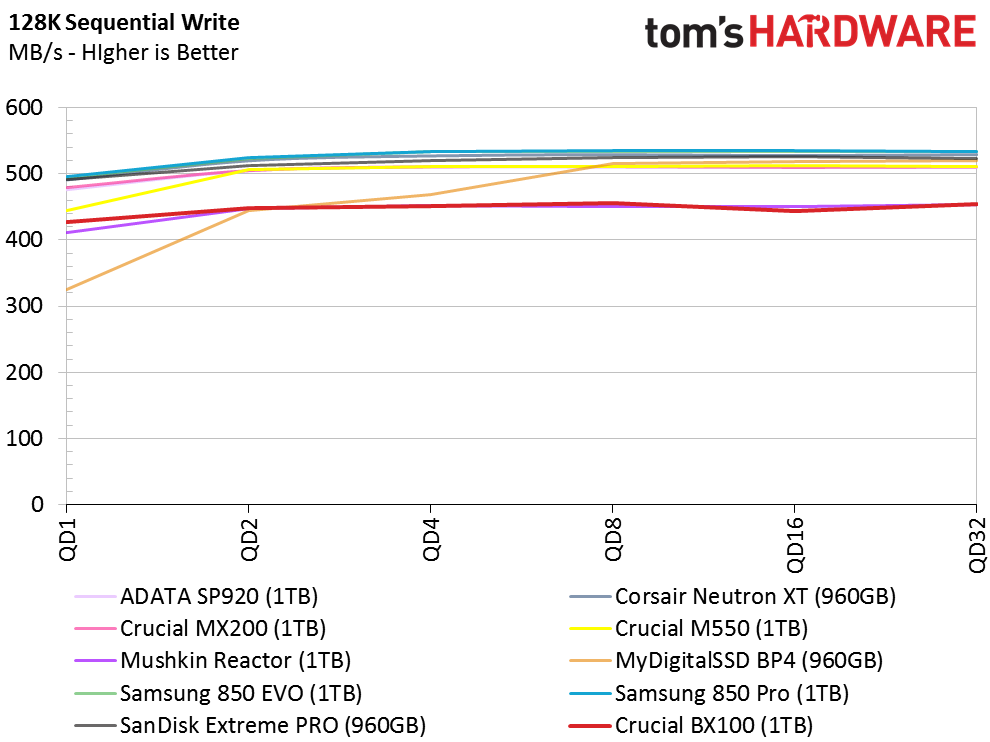
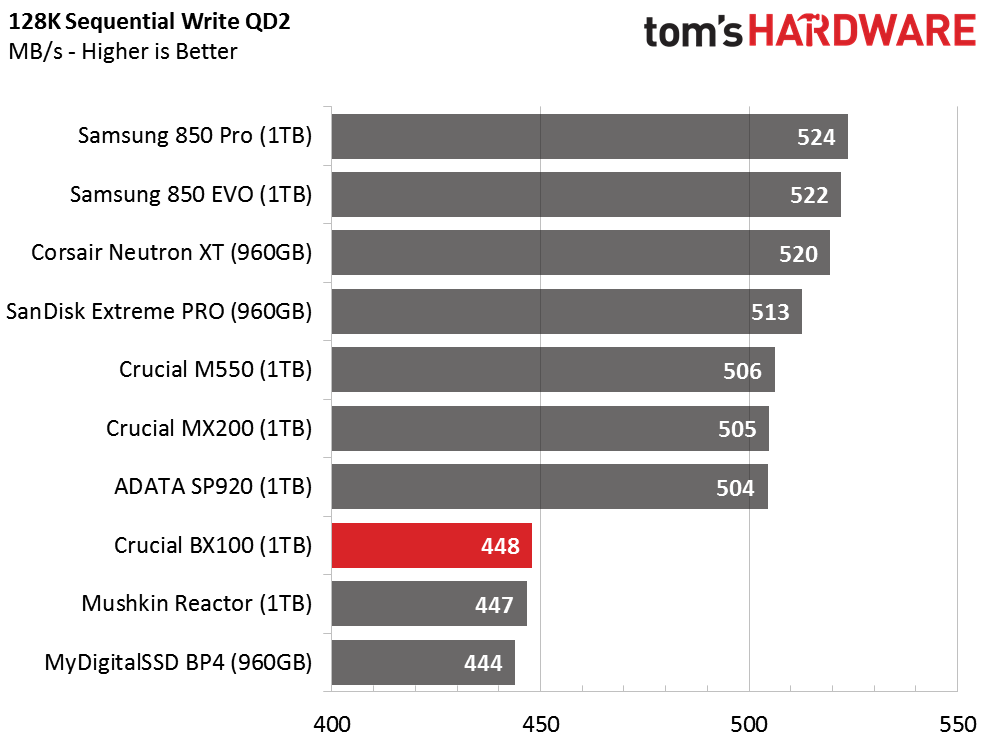
The BX100 performs well writing sequential data, but it's slower than many other models on the market.
At a queue depth of two, the drives separate into two groups. Crucial's BX100 1TB is in the bottom half, though it's also in the lowest-priced group as well. In short, write performance is proportional to the price.
4KB Random Read Performance
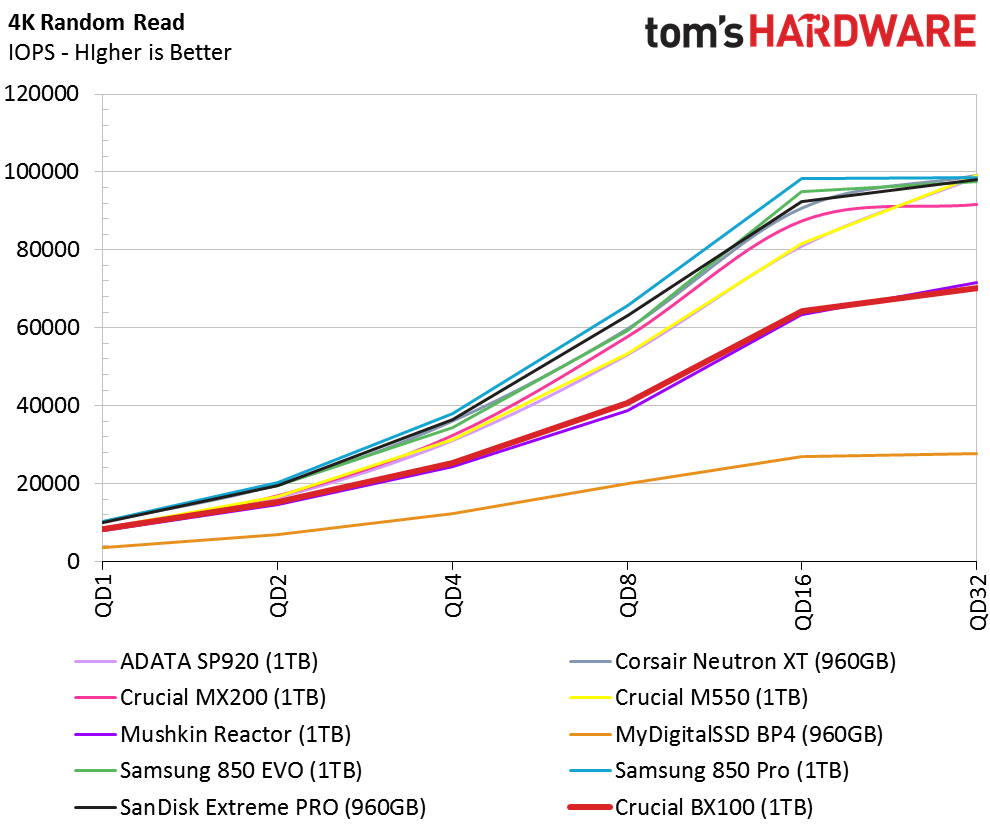
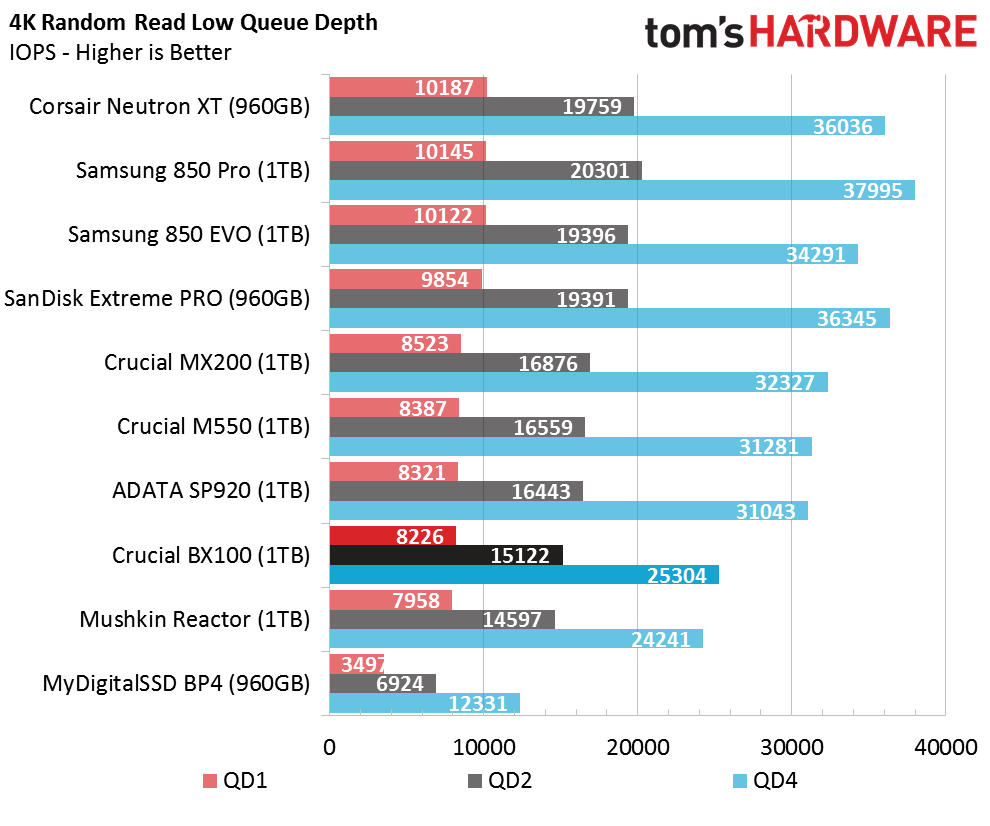
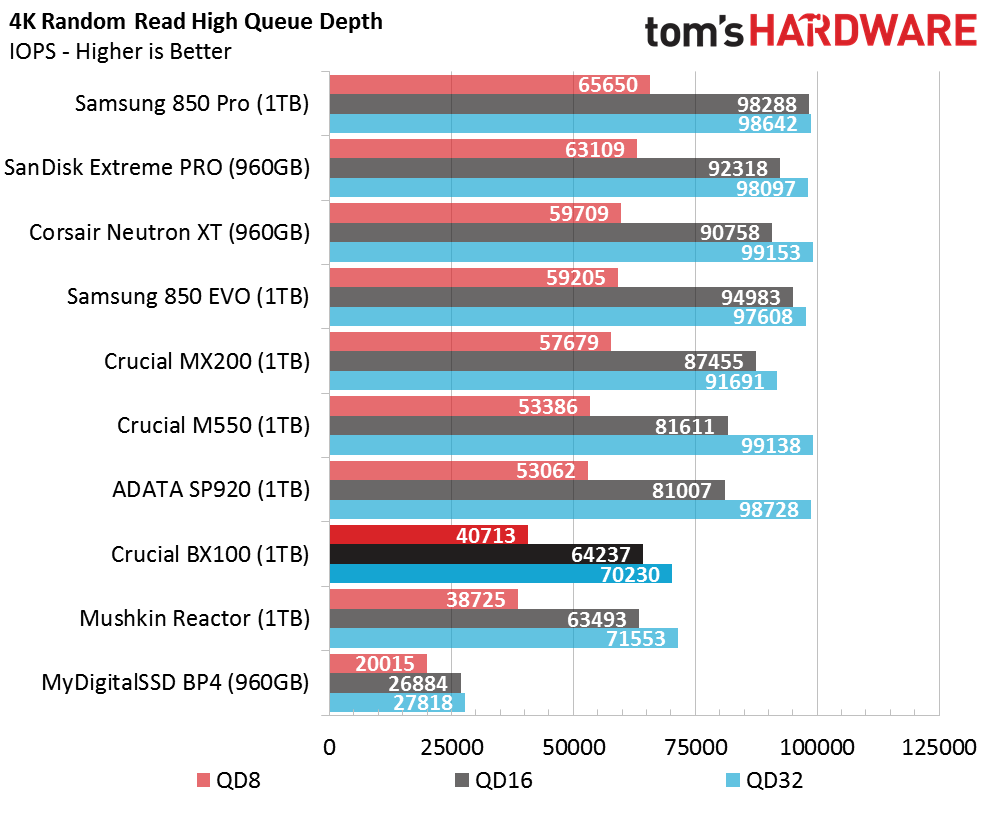
Although the BX100 performs well reading sequential data, random reads barely break 70,000 IOPS. You should be more concerned with performance at low queue depths, though. In a consumer environment, you'll rarely read past a queue depth of four. There, the BX100 appears near the bottom of the list with Mushkin's Reactor, another SM2246EN-controlled 1TB SSD.
In normal consumer workloads, we rarely get into high queue depths reading random data. SSDs are just too fast for requests to stack up. This can change with heavy multitasking, but nearly every SSD provides the enough throughput to satisfy what a handful of open programs use.
Get Tom's Hardware's best news and in-depth reviews, straight to your inbox.
4KB Random Write Performance
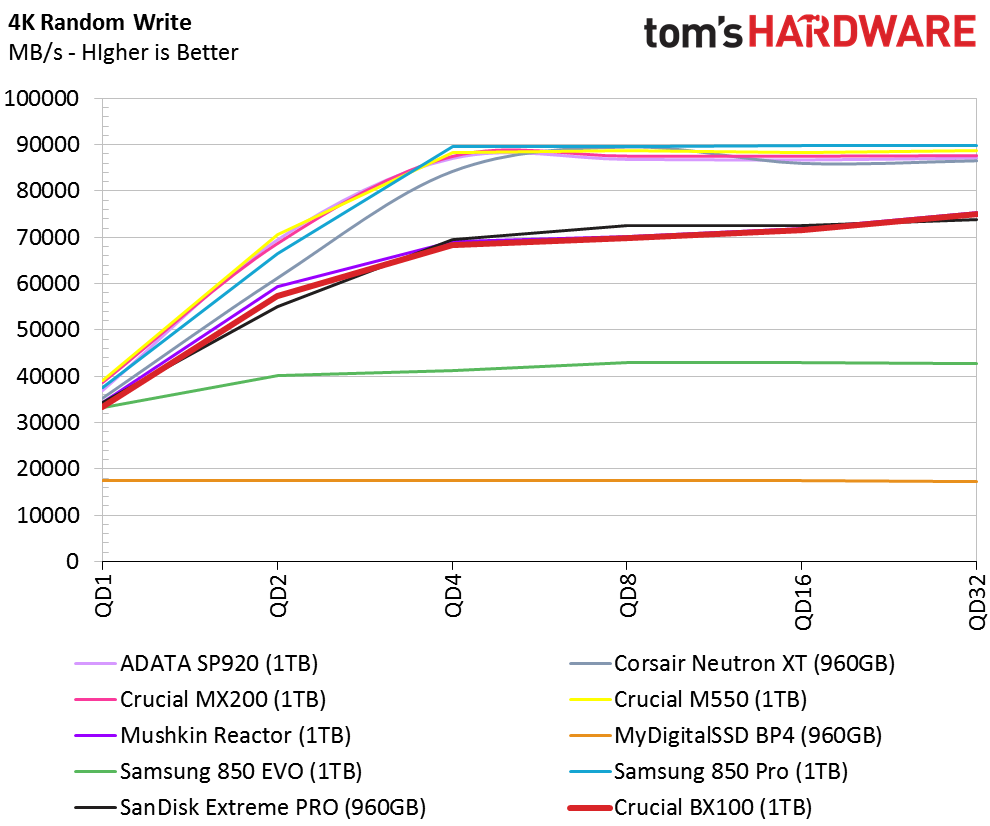
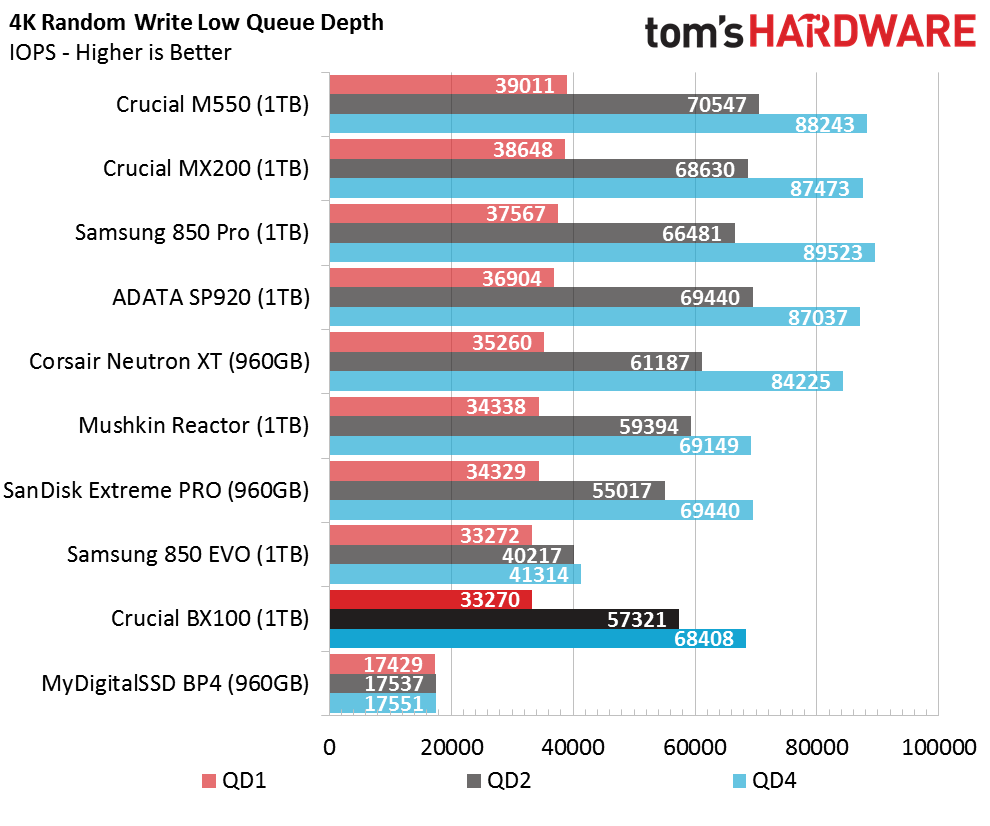
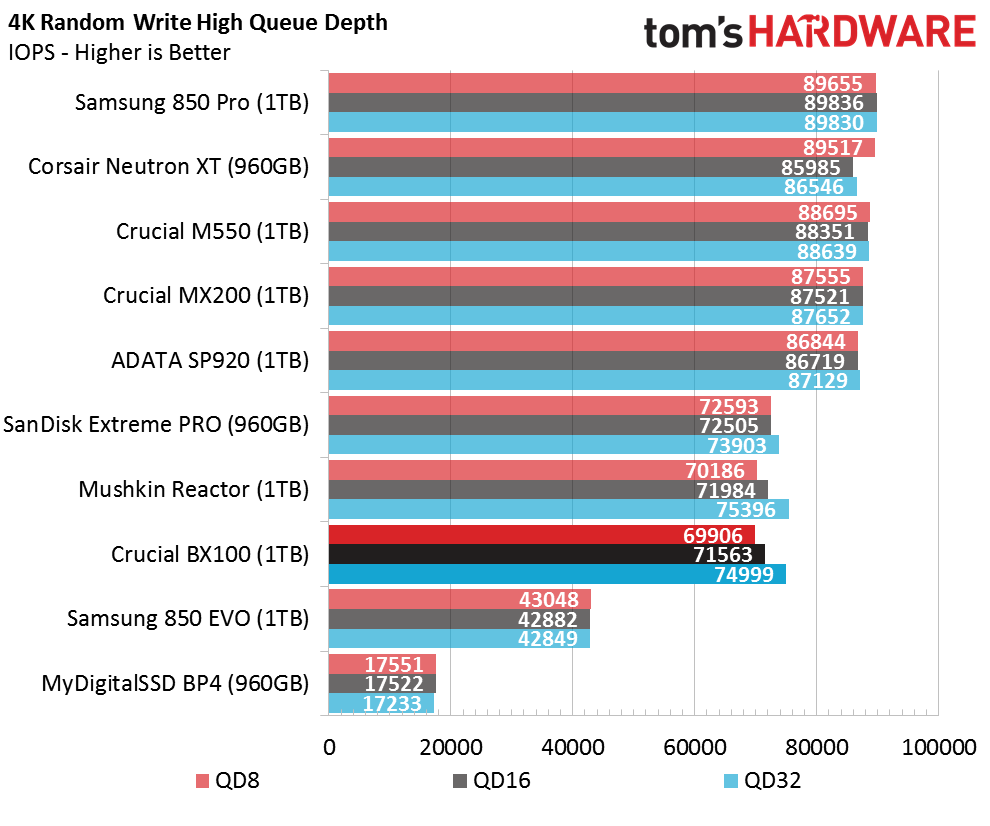
Again we find the BX100 at the low end of the scale. It still delivers acceptable performance at a queue depth of one though, and it scales well up to a queue depth of four.
It's actually easier to hit higher queue depths writing random data than reading it. We install apps, update Windows, and download torrents on a new PC. Though, once everything is current, the write activity slows.
Current page: Four-Corner Performance Testing
Prev Page A Closer Look At The BX100 1TB Next Page Mixed Workload And Steady State Performance
Chris Ramseyer was a senior contributing editor for Tom's Hardware. He tested and reviewed consumer storage.
